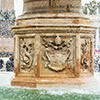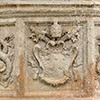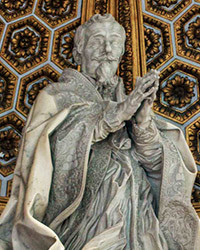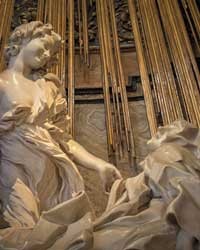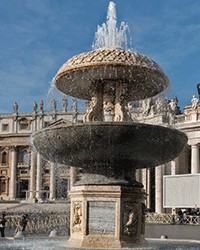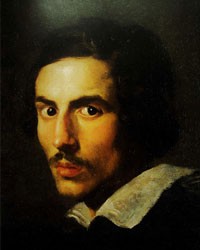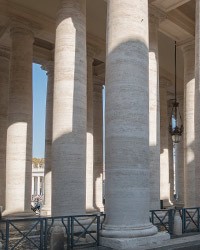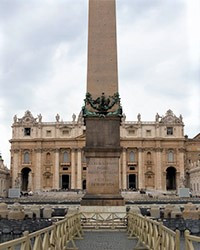Fontane di Piazza San Pietro – water fireworks at St. Peter’s Square
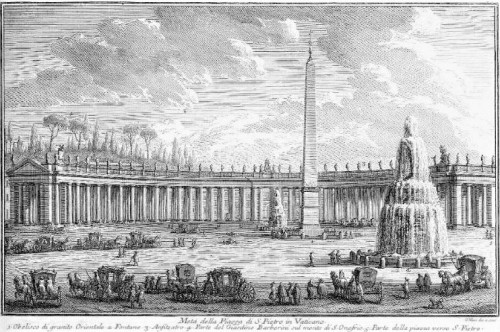
Fountains of St Peter's Square, Giuseppe Vasi, Delle magnificenze di Roma antica e moderna, 1747, pic. Wikipedia
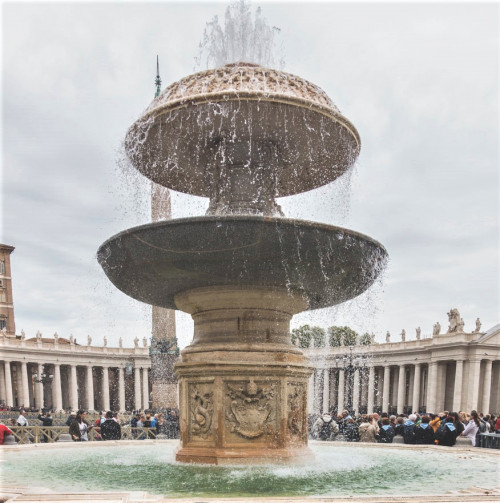
Fountain of pope Clement X, St. Peter's Square

Fountain of pope Clement X, fragment, St. Peter's Square

Fountain of Clement X, fragment, St. Peter's Square, coat of arms of Pope Clement X
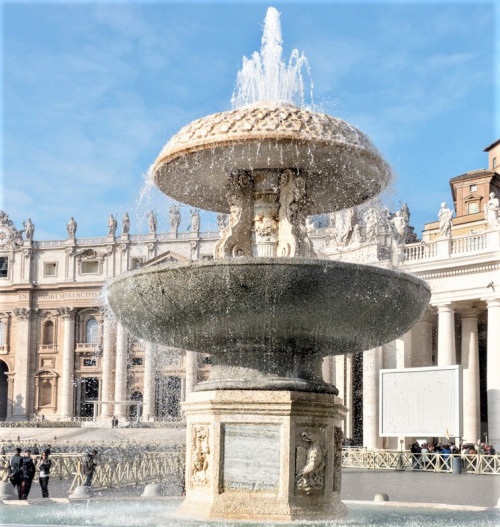
Fountain of Carlo Maderno, St. Peter's Square
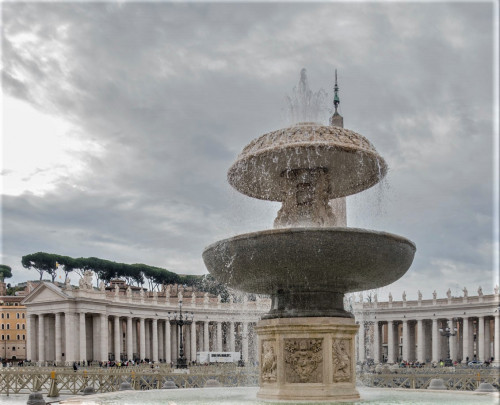
Fountain of Carlo Maderno, St. Peter's Square
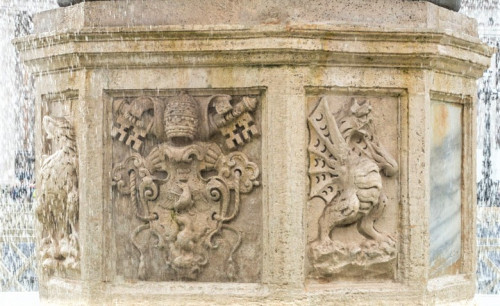
Fountain of Carlo Maderno, fragment, St. Peter's Square, coat of arms of Pope Paul V
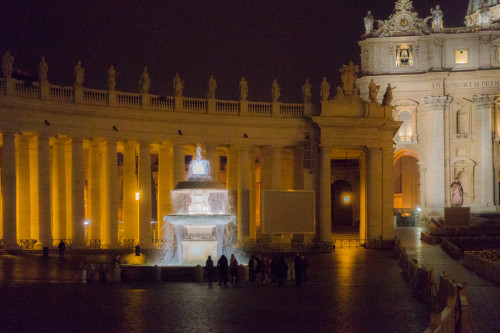
Fountain of Clement X, St. Peter's Square
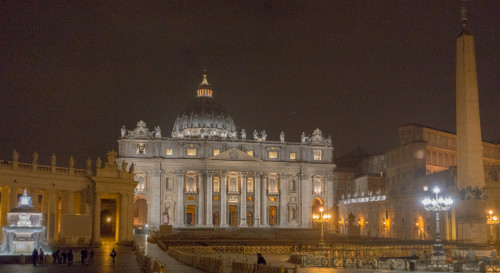
Fountain of Clement X against the façade of St. Peter, St. Peter's Square
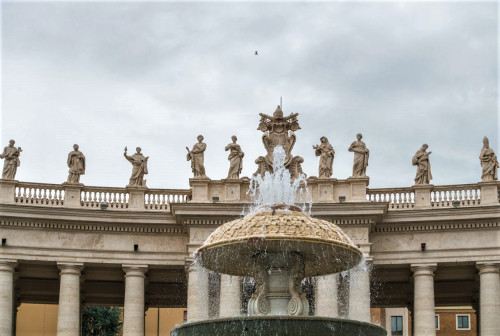
A fountain against the background of the colonnade of Gian Lorenzo Bernini
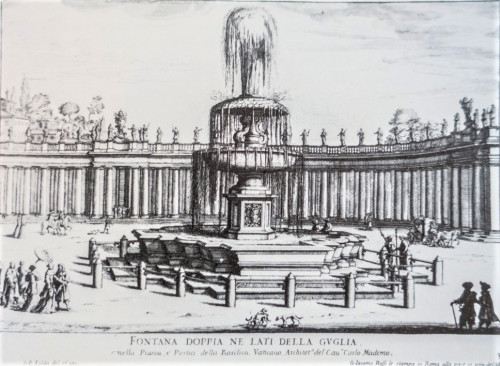
Fountain of Carlo Maderno, St Peter's Square, Gian Battista Falda
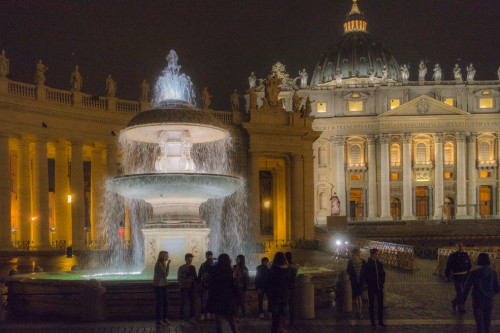
Fountain od Clement X, St. Peter's Square
Standing upon St. Peter's Square and looking around at the wonders of the architecture surrounding it, only after a while will we notice two fountains, located on either side of the Vaticano Obelisk. Their beauty is by no means exceptional, however, the sound of the water and its drops splashing around, create a glowing wall of multi-colored fog, supplementing the ideal harmony of this place – an urban masterpiece.
Standing upon St. Peter's Square and looking around at the wonders of the architecture surrounding it, only after a while will we notice two fountains, located on either side of the Vaticano Obelisk. Their beauty is by no means exceptional, however, the sound of the water and its drops splashing around, create a glowing wall of multi-colored fog, supplementing the ideal harmony of this place – an urban masterpiece.
Old engravings depict these fountains as spouting strong streams of water, almost geyser-like, so much so that subsequent plates of the fountains are not visible. Today these are rather slow-moving streams, through which we can see their individual elements. They are quite similar to each other, although not identical. They can be distinguished by the reliefs found on their shafts, which inform us of their founders. Each of the fountains consists of a broad lower bowl, a shaft, and two gradually decreasing pools. Thanks to this the water could descend as if in cascades, for centuries arousing the admiration of visitors on the wonders of nature combined with engineering. Both were made of granite and travertine. They are 8 meters high, while their pools have a circumference of 28 meters (lower) and 16 and 12 meters (upper).

They obtained their final form at the time of completion of Bernini’s colonnade, which surrounds St. Peter’s Square, however, they date back to ancient times. Water reached the Vatican as early as the times of Emperor Trajan (98-117), thanks to an aqueduct (Acqua Traiana), which he had built. It is difficult it imagine, but its source was the town of Bracciano, located approximately 50 kilometers away from Rome. In 1490 at the behest of Pope Innocent VIII, a fountain for pilgrims was built on the right (facing the basilica), on the northern side of the square. Here, they could quench their thirst and wash after their long journey. The irreplaceable chronicler Stefano Infessura praised its beauty, describing the two – decorative papal coats of arms and reliefs – the circular pools from which water descended; by writing, “that nothing similar can be found anywhere in Italy”. Ten years later the fountain was renovated by Pope Alexander VI, ordering an additional drinking trough to be added for horses. And so it remained until the beginning of the XVII century. Then Pope Paul V, the very same, whose proud name is engraved upon the façade of the basilica, reconstructed and modernized the Trajan’s Aqueduct, which was renamed Acqua Paola, in his honor. The pope also ordered the reconstruction of the fountain. Acqua Paola runs all the way to Janiculum Hill (Gianicolo) 266 meters above sea level, in another fountain constructed by Pope Paul V, the dell’Acqua Paola. From there, through pipes, it flows to the fountain on St. Peter’s Square. The author of this new form was Carlo Maderno – the creator of numerous fountains in the city. He built, a new, multilateral, elevated by a few steps pool. He kept the middle bowls of the old fountain, while the upper one he replaced with a reversed plate (a type of a mushroom), which was covered by stone scales, achieving an outstanding optical effect in this way. The water spouting several meters into the air, in falling struck the stone base of the mushroom, splitting into numerous drops, which shone with a multitude of colors in the rays of the sun, and sometimes even created a rainbow. The old coats of arms of the previous founders were removed, replacing them with the coat of arms of Paul V and the images of the eagle and dragon – the heraldic symbols of the Borghese family from which the pope came, placed in the panels of the plinth.
At this time the square in front of the basilica was enhanced by only a single fountain. This all changed after St. Peter’s Square (Piazza di San Pietro), and especially the colonnade, was designed by Gian Lorenzo Bernini in the middle of the XVII century. In order to make its space more uniform, on the opposite, southern side of the square, a second fountain had to be built. This was also accomplished by Bernini, patterning himself after Maderno's fountain, but not until the pontificate of Pope Clement X (1667). And it is his coat of arms (six stars) that is visible on the shaft of the fountain, also known as the fountain of Clement X. Upon it, we will also notice an inscription commemorating Pope Paul VI, who renovated the fountain in the XX century.















